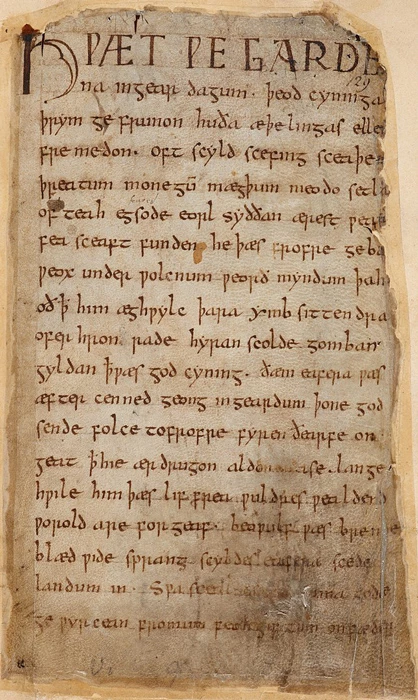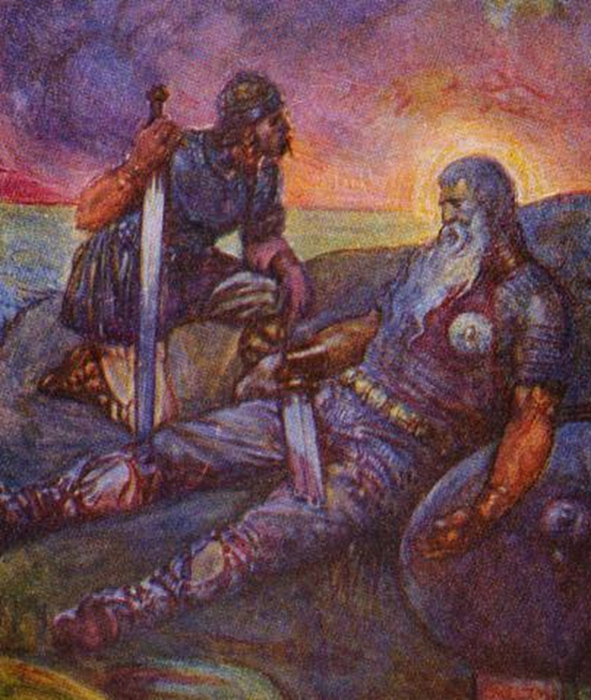The epic poem of Beowulf is one of the most famous stories in Old English literature. The story of Beowulf, legendary leader of the Geats, and his battle against the monster Grendel has survived down the centuries, its origins lost in time.
But while Beowulf himself might be a familiar name, that of his people, the Geats, is less familiar. Beowulf is set in the 6th century, and Scandinavia at this point contained many different peoples.
Some of the tribes who lived alongside this mysterious culture survive to the present day. For example Beowulf comes to the aid of the king of Denmark. Other names, such as the Jutes, are less familiar.
But the Geats seem especially elusive, and the narrative events of Beowulf, written in England and set a century earlier, can provide only a starting point for this enigmatic tribe. So who were these people who came to aid of the Danes against monsters and dragons?
The Epic Poem Beowulf
Beowulf is described as a hero or champion of the Geats, faster than a sea monster and stronger than a demon. Although a mortal man, his powers were said to be more than that of a dragon.
Beowulf and his companions, all Geats, cross the sea and come to the aid of Hrothgar, high king of the Danes, in his great hall Heorot. Hrothgar’s people have been attacked by a murderous monster named Grendel, who comes and night and kills anyone who stands in his way.
Beowulf meets with Grendel in single combat, tearing off the monster’s arm before killing it with his bare hands. He then goes on to kill Grendel’s mother, who is looking for revenge.

Returning victorious to Geatland, Beowulf refuses to take the throne after his uncle, King Hygelac, dies. But he ultimately became the king when his uncle’s son, Heardred, is killed in battle.
- Eric Bloodaxe: Did this Viking Win an English Kingdom?
- The Merovingians: Were these Dark Age Kings descended from Christ?
Beowulf is said to have reigned for around 50 years, leading the formidable warriors of the Geats against many different enemies. He did all he could to protect his people and is seen as a heroic king similar to the British King Arthur.
But one day, a thief awakens a dragon, and Geatland is about to face the biggest threat of all time. The thief was trying to steal a goblet with the dragon, and aroused in anger it starts slaughtering the Geats and burning their villages.
Beowulf, by this point an old man, takes the matter into his own hands. He called for a group of 11 trustworthy warriors along with the thief. The thief knew the location of the dragon’s lair, for which he had to accompany the warriors.
Beowulf prepares himself for a final battle with the monster. Confronting the dragon, all of the warriors flee except for Beowulf and a single companion, Wiglaf. In a mighty battle Beowulf defeats the dragon with the help of Wiglaf. But Beowulf himself is mortally injured in the fight.
After the death of Beowulf, the Geats prepare an enormous funeral pyre filled with treasures. After the pyre was burned and all rituals were complete, the Geats spent ten days building an enormous barrow as a monument for their brave and lost King.

Beowulf, before his death, handed over the golden collar to Wiglaf and entitled him as “The Last of the Waegmundings,” It means that he was the last member of the clan, the only survivor after the death of Beowulf.
The Geats
Clearly, as with the Iliad or the Aeneid, much of the story can be considered ahistorical and legendary. But who were these people, whose hero could defeat monsters? Clues can be found in the text, such as the Geats crossing the sea to Denmark.
The king Hygelac, Beowulf’s uncle and one of six described in the poem, provides the final link between fantasy and reality. This king, his family line and a raid he conducts into continental Europe are found both in Beowulf and in other historical records. It is this crossover which allows Beowulf to be dated.
Hygelac is described as “Rex Getarum” and “Rege Gotorum” in contemporary sources, being titled the “king of the Geats” or the “Goths”. His people occupied southern Sweden in the 5th and early 6th centuries AD.
Across the sea from modern day Poland and Denmark, this would fit with the descriptions of Beowulf’s journey in the poem. Other, earlier sources seem to confirm this association, for example Claudius Ptolemy, writing centuries earlier, describes a people in this region he calls the “Goutai”.
Later Greek and Norse sources, written at the same time as the events of Beowulf, refer to the “Gautoi” or the “Gautar”, and provide more details on Beowulf’s people. This aggressive tribe carved themselves a territory amongst the warring peoples of Scandinavia, and the modern Swedish city of Gothenburg, facing Denmark across the sea, bears their name.
What Happened to Beowulf’s People?
As a people, the Geats remained a powerful force in southern Sweden into the middle ages, helping shape the Christian kingdom the country would evolve into They would survive as a distinct people as late as the 15th century, and up until the 19th century the Swedes would refer to Geats, rather than Vikings, as their heroic and warlike forebears.

But Beowulf is a poem written in England, far from the home of the Geats. Although doubtless based on an oral tradition stemming from Scandinavia, it would seem that not all of these people stayed in their home territory.
The Anglo Saxon settlement of Britain, in the centuries following the end of Roman rule in 410 AD, clearly carried this oral tradition with it. The Geats are not known to have joined the Angles and the Saxons in crossing the seas to eastern Britain, but the Jutes, a people of southern Denmark, certainly did.
The association of the Jutes with the Geats has been the subject of much confusion among medieval scholars, but they are clearly two intertwined people. The story of Beowulf would not therefore come from Geat sources at all, but from the Danes whom the great hero rescued from the monster Grendel.
So, did the Geats die out? The simple answer is yes, but it is more complicated than that. Subsumed into Sweden as heralded as heroic ancestors of the Swedes, it would seem that they live on in tradition, in history, and through the epic poem Beowulf.
Top Image: Beowulf faces off against the monster Grendel. Source: Iobard / Adobe Stock.
By Bipin Dimri